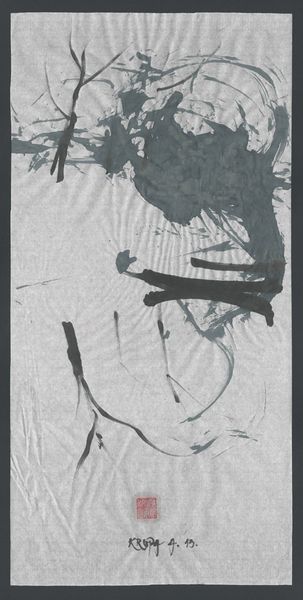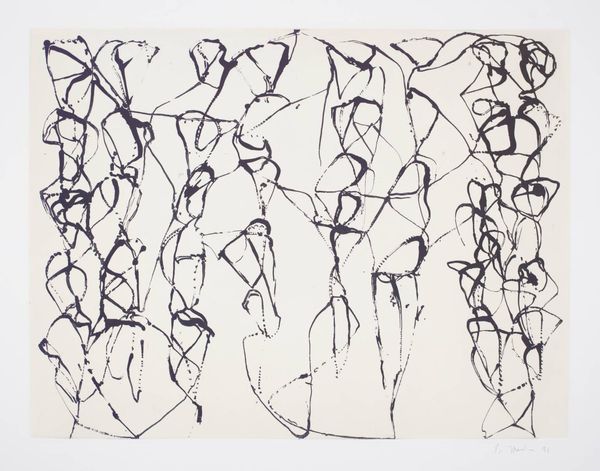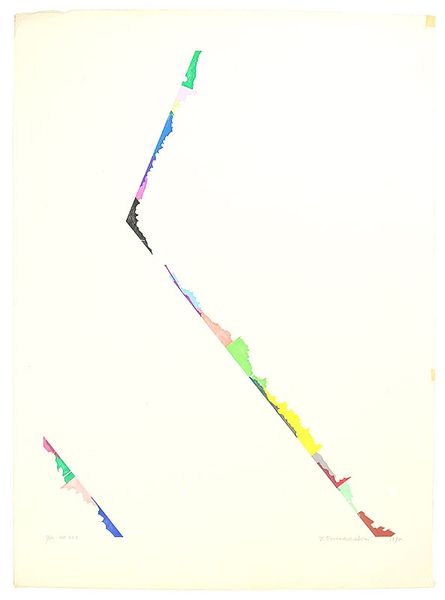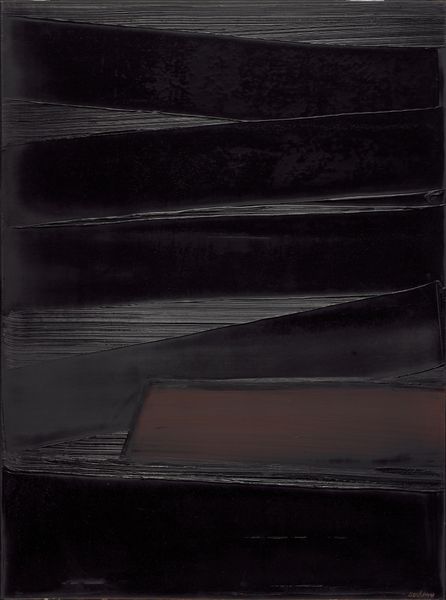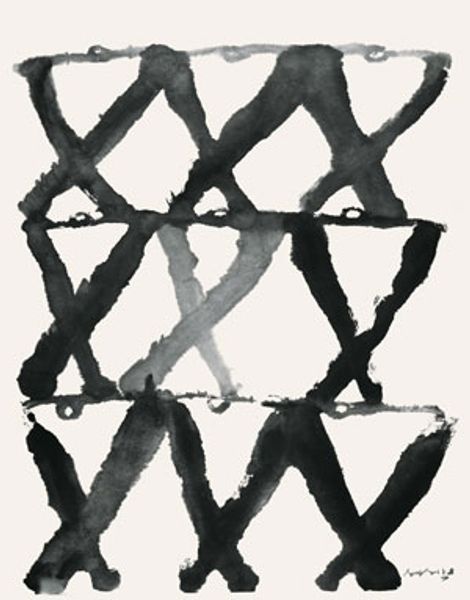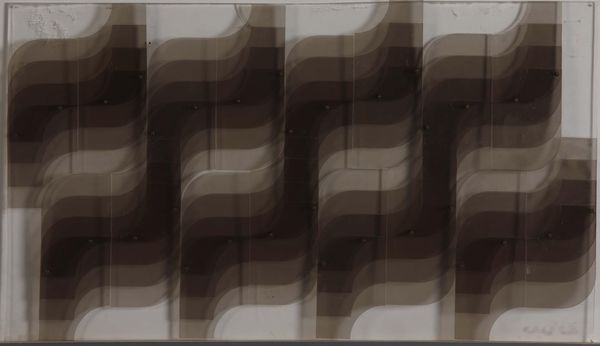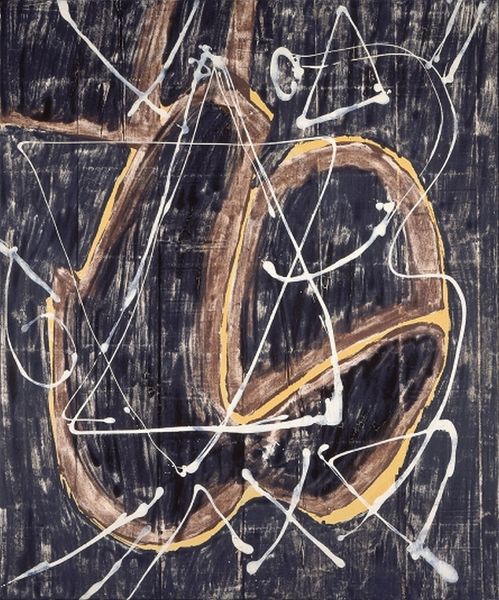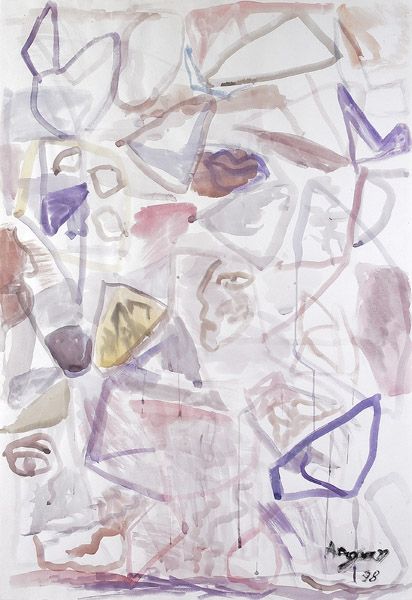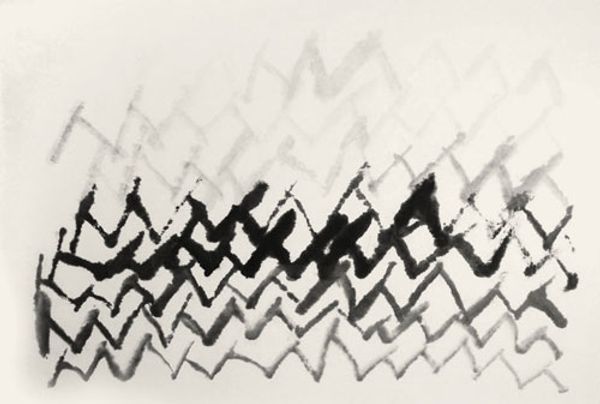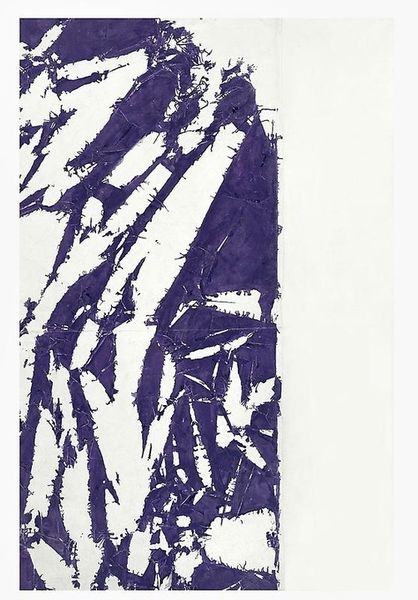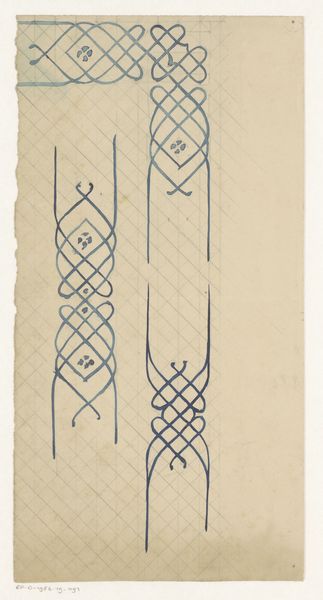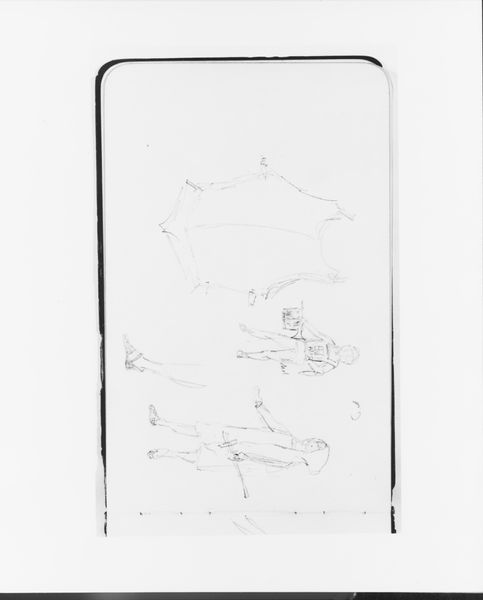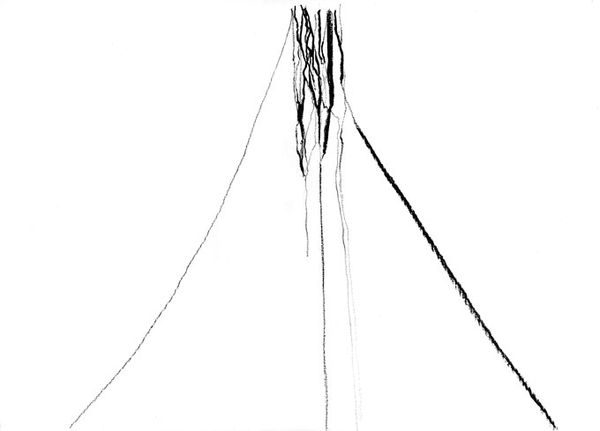
drawing, print, graphite
drawing
form
geometric
abstraction
line
graphite
modernism
Dimensions: sheet: 83.5 x 61.6 cm (32 7/8 x 24 1/4 in.)
Copyright: National Gallery of Art: CC0 1.0
Curator: Here we have Al Taylor’s “Dixie” created in 1990, a fascinating piece combining drawing and print, predominantly using graphite. Editor: Immediately striking is its tentative air, almost ephemeral. The subject seems sketched into existence rather than boldly declared. A study in spatial relationships using, primarily, line. Curator: Indeed. Note the repeated geometric motifs. The eye is drawn to the cylindrical form crisscrossed by diagonals, echoed by the planar X form to its right. There is a fascinating interplay of three-dimensionality and flattening. Editor: And that title, "Dixie"—it sets up a certain expectation that the piece then undermines. While the crossed diagonals evoke that Southern symbol, the abstraction and fragility steer it away from becoming a straightforward emblem. Perhaps more about echoes of memory. Curator: Precisely! The title may act as a linguistic signifier prompting a deeper investigation. Yet it seems to serve the larger artistic aim of deconstructing conventional forms of representation through its geometric and linear qualities. Editor: And then the visible process: the smudges, erasures… It’s about the hand’s interaction, not the completed icon. Like seeing the mind work out meaning and association in real-time, questioning identity. Curator: A potent reading. Ultimately, Taylor presents us not with resolution, but with an aesthetic meditation. The linear arrangement and composition open numerous interpretations concerning form and its relationship to representational meaning. Editor: It’s like seeing the echo of an idea, beautifully unfinished and all the more powerful for it. It allows the viewer space to create a dialogue. Curator: A visual dialogue, indeed. A potent reminder that even seemingly simple arrangements can house complexity.
Comments
No comments
Be the first to comment and join the conversation on the ultimate creative platform.
